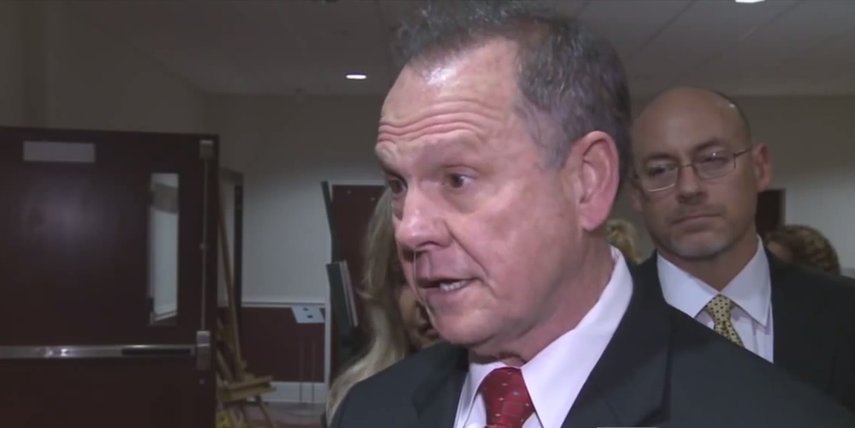QUICK HIT:
- Alabama’s prisons are currently operating at twice their capacity
- The vast majority of Alabama inmates are non-violent offenders
- The cost of housing inmates ($400 million/year) is busting the state’s budget
- The Supreme Court ordered the release of 46,000 criminals in California because their prisons were overcrowded
- The same could happen in Alabama if state lawmakers don’t act
Bringing real reform to Alabama’s congested prison system may be an idea whose time has finally come.
To say the state’s prisons are overcrowded would be an understatement. They’re currently operating at almost twice their capacity.
While 1 in every 190 Americans is serving a prison sentence of a year or more — which is absurd in the “Land of the Free” — in Alabama that number jumps to 1 in every 148.
As of July 2010, only 43 percent of Alabama’s prisoners were serving time for violent crimes. So the vast majority of Alabama’s prisoners are locked up for non-violent, typically minor drug offenses.
The costs of housing these inmates is skyrocketing.
Alabama has seen a 95 percent increase in the cost per inmate over the last two decades. As of 2008, the state was spending $15,178 per inmate each year. That’s $41.47 for each inmate every single day — cash that’s coming straight out of our paychecks.
This is putting a huge strain on the state’s beleaguered (i.e. disastrous) General Fund Budget. But it’s the overcrowding issue that Alabamians should be most concerned about right now.
To put it plainly, Alabama has the most serious prison crowding problem in the country. It’s so bad that we’re running the risk of federal courts stepping in and ordering the haphazard release of thousands of prisoners from the state’s lockups.
That’s not fear mongering, just ask the State of California.
In the 2011 Supreme Court case Brown v. Plata, the Court effectively required the State of California to remove 46,000 criminals from its prisons by forcing The Golden State to cut its prison population to 137.5 percent of “design capacity.”
The Public Policy Institute of California found that property crime increased by 7.6 percent the year after the mass releases. Car thefts rose almost 15 percent. In short, 24,000 more people had their car stolen in California in 2012 as a result of the state not being able to get its prison overcrowding problem under control.
And remember, Alabama’s prisons are currently at roughly 187 percent capacity, 50 percent higher than the level the Court mandated for California.
This week, the situation inside Alabama’s prisons got national media attention due to inmates staging protests at several facilities. Some of the prisoners refused to cook food or do laundry. Some even demanded pay for their work. That’s silly.
However, a corrections officer called into talk radio station WYDE on Monday and said he believes the protests may have been organized from outside the prison by activist groups looking for an opportunity to introduce a lawsuit or to simply gain the attention of the courts.
“Last night felt like it was about to get out of control,” the officer said. “Tensions are real high. They’re trying to draw us into a confrontation so they can sue us.”
The protests have already gotten the attention of State Senator Cam Ward, R-Alabaster, who has been one of the Alabama legislature’s leading advocates for prison reform.

“We’re dealing with a box of dynamite in our prison system,” Ward told AL.com’s Mike Cason Tuesday. “I would rather us as a Legislature deal with it … as opposed to a federal judge coming in slashing and burning.”
Ward said he believes Alabama’s prison system is the “greatest threat to state budgets” and suggested following the lead of other states that have successfully reformed their prison system in recent years.
One such state could be Texas, which opted not to build new prisons about 5 years ago. Instead, the state improved its probation and parole systems and in-prison reform programs. They saved over $3 billion dollars by not building new prisons and saw their crime rate hit its lowest point in a half century.
North Carolina is another state that achieved a significant reduction in its prison population by prioritizing space for violent offenders, strengthening probation and parole supervision and sending low-level drug offenders to drug courts.
Katherine Robertson of the Alabama Policy Institute said it best, “(Our) leaders must act to improve and expand alternatives to incarceration for low-risk and nonviolent offenders to ensure that costly prison space is focused on those who pose a long-term threat to our public safety, not those we are simply mad at.”
The high-cost, low return system we currently have is broken. Instead of improving the state’s infrastructure, adequately funding our judicial system, or any number of other potentially beneficial uses of General Fund dollars, Alabama is spending just under $400 million a year (!) on a corrections system that doesn’t even work.
This is a tough issue that is not going to be solved in one bill or even one session. It’s going to take years.
But it’s a huge opportunity for Alabama legislators to step up and get us headed in the right direction before a federal judge swoops in and does it for us.
Follow Cliff on Twitter @Cliff_Sims
(Note: much of the data in this article came from excellent research done by the Alabama Policy Institute. It can be found here and here.)











